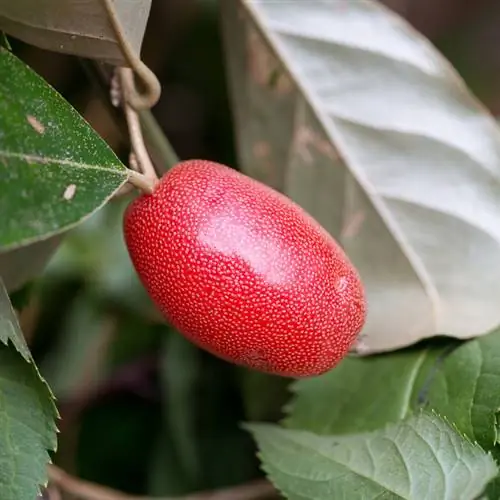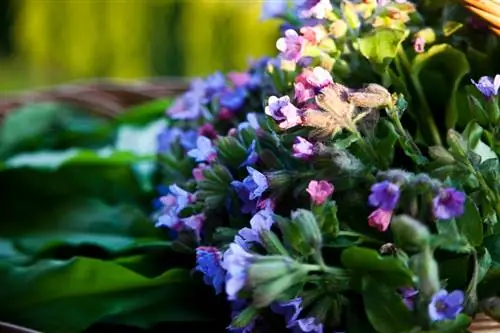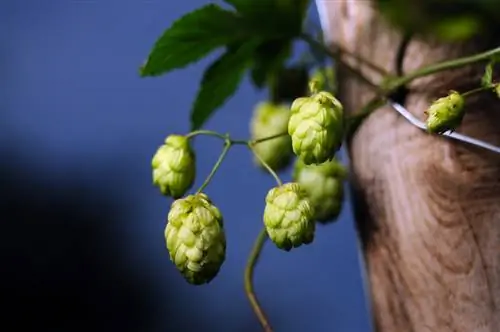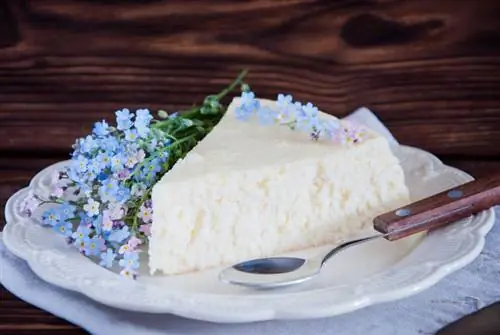- Author admin [email protected].
- Public 2023-12-16 16:46.
- Last modified 2025-01-23 11:20.
Many people already know that the flowers of many herbs and vegetable plants, but also wild plants such as dandelions and daisies, are edible. But did you also know that there are also edible chrysanthemums?
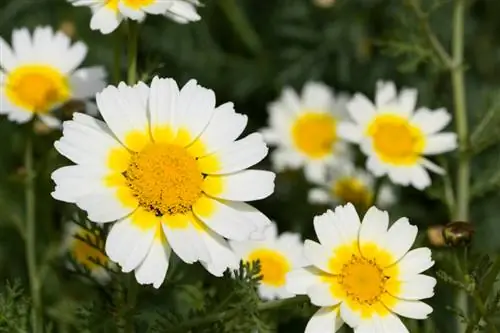
Are chrysanthemums edible?
Chrysanthemums, especially the salad chrysanthemum (Chrysanthemum coronarium), are edible and are suitable as a spice or as a salad addition. The young leaves, shoots and petals can be eaten raw or steamed, although the petals are less bitter than the roots.
Chrysanthemum coronarium: leaves and flowers are edible
The edible chrysanthemum is also known under the common names edible chrysanthemum, salad chrysanthemum and gold flower or usury flower, but is known to botanists as Chrysanthemum coronarium. It is a fast-growing, annual ornamental and spice plant that can grow up to 90 centimeters high. The salad chrysanthemum belongs to the daisy family and originally comes from southern China.
Cultivation of lettuce chrysanthemums
The edible chrysanthemum prefers humus-rich, loose soil and a partially shaded to sunny location. The seeds germinate best at 15 °C and should be planted early in March (€1.00 at Amazon). Alternatively, sow seeds directly outdoors in the months of August to September, whereby the seeds should be covered with soil about a centimeter thick. The plant can also be easily cultivated in pots.
Uses of salad chrysanthemum
The chrysanthemum tastes intensely tart to bitter and is ideal as a spice for Asian cuisine. If you don't like it quite as bitter, cut off the white roots of the flowers - these contain the most bitter substances. The young shoots and leaves can be used raw in salads and soups or steamed as a vegetable. The white-yellow flowers, which bloom between July and September, are also edible, but only the petals. Once the plant flowers, leaves and shoots should no longer be used.
Harvesting chrysanthemums
Use the plant parts as fresh as possible, but if this is not possible, the leaves and flowers can be kept in a bowl of water for a few hours (or days). Make sure to only harvest specimens that you have grown yourself or that are explicitly sold as food plants - chrysanthemums in particular are often trained with pesticides and plenty of fertilizers. You can harvest as soon as the plant has reached a height of between 10 and 25 centimeters. Since new leaves and flowers continue to appear, you don't need to be afraid of a strong pruning.
Tip
The finely chopped, young leaves can be used as a spicy substitute for parsley. The flowers, on the other hand, not only taste good in salads or as a decoration for sweet and savory dishes, but also when fried in pancake batter.


